INDIA SECRETLY BUILT NUCLEAR WEAPONS
The Challenge Of A Multi-Polar Nuclear Age – Analysis

Russia launches Sarmat intercontinental ballistic missile at the Plesetsk testing field on April 20. Photo Credit: Russian Defense Ministry video screenshot
By IPCS
By Vice Admiral Vijay Shankar (Retd)*
Of Parity, Assured Destruction, & Mistrust
For the last 77 years, since the US first detonated nuclear weapons and annihilated the Japanese cities of Hiroshima and Nagasaki, an eerie ambivalence has prevailed on the sect of nuclear use. On the one hand, some scholars and practitioners are convinced of the myth of usable nuclear weapons. On the other, governments are devising policies for their use. Meanwhile, Russia is toying with the idea of escalating the war in Ukraine to nuclear levels, simply in order to de-escalate the on-going conflict. On the other side of the globe, China is designing a strategy to provide greater flexibility in the use of nuclear forces.
Significantly, the first nuclear attacks also defined the basis of nuclear stability. The relationship between the bellicose nuclear-armed states was marked by three characteristics: the quest for parity in arsenals, the certitude of mutual destruction, and a bizarre level of mistrust that drove states to adopt grotesque stratagems. Noam Chomsky has pointed out just how abominable the US nuclear war plans could be: “This US nuclear war plan, if our first alert system had alerted a Soviet strike, would have delivered 3200 nuclear weapons to 1060 targets in the Soviet Union, China, and allied countries in Asia and Europe.” General Butler, a former commander-in-chief of US Strategic Command, put it succinctly when he denounced current nuclear programmes and systems as a death warrant for humanity.
Flawed New START
The New Strategic Arms Reduction Treaty (New START) was signed on 8 April 2010 by the US and Russia. The instrument was a continuum of a bipartisan process to reduce nuclear arsenals. In 2021, the two parties agreed to extend the Treaty by five years. The key provision of the agreement limits nuclear warheads, delivery vectors, and launchers and institutes a system of verification.
The Treaty is, however, amiss, both conceptually and in substance. Conceptually, it is neither inclusive of all nuclear-armed states nor does it identify ‘mistrust’ as a key factor that stokes scepticism. In substance, it fails to recognise that all nuclear weapons, including tactical, are weapons in the same category, because when used, they have the potential to escalate to mass destruction. In addition, the Treaty pays no heed to the fact that warheads held in reserve can very quickly be deployed. But where it is fatally flawed is its inability to institute measures that diminish the intent to use. It doesn’t demand all nuclear-armed states to abjure the first use of nuclear weapons as an essential doctrinal point that allays the perils of nuclear devastation.
Nuclear Weapons: An Umbrella for Conventional War
Just how consequential the threat of use can be has been demonstrated in the course of the Ukraine conflict. Russia has obliquely threatened the use of nuclear weapons to provide an umbrella for its war. This has turned the Cold War idea of deterrence on its head. Moscow is using the deterrence value of its nuclear arsenal not to protect Russia but rather to provide space for conventional action. The Kremlin introduced an explicit nuclear dimension through its various declarations. On 18 February 2022, Russia conducted nuclear force manoeuvres prior to invading Ukraine. The event left little doubt as to the linkage of the timing with the impending conflict. On 24 February, Moscow warned NATO in a declaration that there would be unprecedented consequences should a third state attempt to obstruct Russia’s designs. President Putin went further on 27 February, announcing that Russia’s nuclear forces had been placed on “special alert.” This kind of public announcement regarding nuclear forces was last proclaimed by the US during the 1973 Yom Kippur War. Foreign Minister Sergei Lavrov later noted cryptically that a third world war would be “nuclear.”
The Bluff of Extended Deterrence
In this milieu, the very idea of ‘extended nuclear deterrence’ takes an outlandish turn. The logic of guarantee against a nuclear attack on a third country implies that the guarantor launches a retaliatory nuclear strike. It also implies that the guarantor accepts the consequences, irrespective of circumstance, extent of convergence of interests, or degree of mutuality. This, as recent events in Ukraine have shown, is not rational.
Extended nuclear deterrence demands that both guarantor and beneficiary accept the same conditions of nuclear use, magnitude of response, and norms for escalation, and share the same strategic interests. Since none of these propositions are indubitable, the substance of extended nuclear deterrence is ultimately dependent on the guarantor accepting catastrophic consequences on behalf of a third party. States under this canopy might want to re-consider the credibility of extended nuclear deterrence in contemporary strategic circumstances. The reliance on the nuclear deterrent capabilities of a major power is much more an act of clutching at a straw than a reflection of reality.
Prospects for Nuclear Stability: A Revisit
Many factors that deterred military conflict during the Cold War and after have weakened. The growing parity of arsenals, absence of moderating pressures, and power imbalances between states have exposed underlying stresses within the global system and increased the probability of conflict.
Russia’s case is symptomatic of the current anarchic state of affairs. Having lost the economic, technological, and political heft of the Soviet era, it retains great power aspirations, demands exceptionalism, and clings to nuclear superpower status. Its nuclear arsenal is a key component of leverage: it endows immunity from military pressure and the leeway to pursue an independent foreign policy.
Nuclear deterrence today can only work in conjunction with agreements, limitations, and transparency. Without these, it brings antagonistic powers to the brink of nuclear war in a crisis. In the present fragile conditions of deterrent relationships, the prospects for nuclear stability among the nine nuclear-armed states will remain forlorn.
The Challenge
Cold War nuclear paradigms cannot be further tweaked to provide an illusion of stability to the nine nuclear-armed states. Priority should be given to identifying methods to dispel mistrust while advancing the idea that globally, nuclear surety is neither served by ‘parity’ in arsenals nor ‘assurance’ of total devastation. The former has brought a multi-polar encore of an arms race into play, while the latter is a return to barbaric times when extinction was propagated as a solution.
Today, economics and interdependence are the engines of global power. Yet there is reluctance to step back from military situations such as what we see in Ukraine. Nuclear weapons cannot be reduced to a gambler’s game of dare. But to remove it from arsenals altogether is not practicable, especially since states are not ready to wean themselves from an instrument of power. The answer lies in transparency, shadowed by a withdrawal from this calamitous obsession through a general adoption of a policy of no first use (NFU) of nuclear weapons. This is a first step towards disarmament.
*Vice Adm Vijay Shankar (Retd) is Distinguished Fellow, IPCS, and former commander-in-chief of the Strategic Forces Command of India.

India's Pursuit of Nuclear Weapons
Andy Zhao
May 24, 2016
Submitted as coursework for PH241, Stanford University, Winter 2016
Peaceful Beginnings
Bhabha's Three Phase ProgramAt India's conception in 1947, Prime Minister Nehru began an ambitious nuclear program to bring prestige and inexpensive electricity to India. [1] India's nuclear program began as a peaceful push for inexpensive energy, but the nuclear fuel for the reactors also produced plutonium for a potential nuclear weapon. With the assistance of Canada and the United States, a Pressurized Heavy Water Reactor (PHWR) was built that bombarded U-238 with neutrons to chain react to form Pu-239. The CIRUS reactor was built in 1960 with international aid with the intention that it was solely for peaceful energy use even though the plutonium byproducts would be potent bomb fuel. [2]
Building this PHWR was the first step in a 3-phase program planned by Dr. Homi J. Bhabha (see Fig. 1) that would eventually exploit India's large thorium reserves for civilian energy. Bhabha, a Cambridge trained physicist that worked under the scientific giants Dirac and Bohr, was the visionary of India's nuclear program. In 1958, Bhabha claimed India had the capability to build a nuclear bomb within 18 months of the decision (2 years before France and 6 years before China had the capability). In 1972, the signal was given to the scientists and engineers to build the bomb, which culminated in India's nuclear test of 1974. [3]
Bhabha envisioned a three-stage plan for India's civilian nuclear program that also kept the nuclear weapons option open:
Pressurized Heavy Water Reactors (HWR) were used to generate electricity by bombarding naturally mined U-238 with neutrons - leaving Pu-239 as a byproduct of the fission reaction. This was preferable to a Light Water Reactor, which would have required enriched uranium. India received assistance from Canada with the finished HWR CIRUS reactor in 1960 and heavy water from the U.S. on conditions that the reactor would only be used for peaceful purposes. [2] However the plutonium from the CIRUS reactor was diverted to India's bomb detonated in 1974. Bhabha decided in 1958, while CIRUS was being constructed, to build the Phoenix reactor that would be used to extract the plutonium from the spent fuel using the PUREX process developed by the U.S. and declassified under Atoms for Peace. [1]
Fast Breeder Reactors (FBR) utilize the Pu-239 from the first stage to create more fissile material than they consume. A mixed-oxide fuel is produced and reacted with enriched uranium to create more Pu-239. After enough Pu-239 is gathered, thorium will be used in the reactor to produce U-233. [4]
Advanced Heavy Water Reactors utilize U-233 and India's vast thorium reserves to create significant amounts of energy for the country. Other options existed as well, but the ultimate goal was to exploit the country's thorium reserves to produce cheap, sustainable energy for the nation. [4]
Expanding Nuclear Program
Bhabha executed his plan without any domestic opposition and full support from Prime Minister Nehru. India's Atomic Energy Commision's (AEC) budget increased from 1954 to 1956 by 12 times; by 1958, AEC acquired 27% of all government investment in research and development, creating one of the world's largest teams of nuclear scientists and engineers, sending 1,104 Indian scientists to get trained at Argonne Laboratory School of Nuclear Science and Engineering from 1955 to 1974 (when the U.S. began to declassify thousands of reports, including papers on plutonium separation). [1]
Bhabha prevented the International Atomic Energy Agency (IAEA) from interfering with his Three Phase Program (that kept the military option open). The international community wanted to ensure that resources were not being diverted to militarize countries' nuclear programs. However, Bhabha revised a statute to prevent interference in the economic development of states and cited how linked India's nuclear program was to India's economy. There was no resistance from the IAEA or domestically over Bhabha's nuclear stance. Parliament was silent in discussing India's nuclear weapon option. [1]
Indian scientists were able to secretly push towards a nuclear explosion, which demonstrates the lack of military and Parliamentary involvement. In 1968 scientists began to design the device used in the Pokhran explosion in 1974 without any direction, not even from Prime Minister Indira Gandhi. [1] During this secret phase of operation, Rajagopala Chidambaram was tasked to derive the equation of state for plutonium to find how the density of plutonium related to temperature and pressure. This knowledge was essential to achieving a critical mass during symmetric compression of plutonium to get a fission chain reaction. Further, the construction of the Purinma reactor that began in 1970 was commissioned by the AEC under the guise of a fast breeder reactor. The true reason behind Purinma was to reconfirm the fast fission cross-section data of Pu-239 since the published data by the U.S. was not trusted. [1]
Peaceful Nuclear Explosion and Weaponization
In 1972, Prime Minister Indira Gandhi authorized developments for a Peaceful Nuclear Explosion (PNE). And in May 1974, the PNE was detonated in Pokhran and it was the culmination of India's entire nuclear program up until that point. Subsequent nuclear testing and weaponization was not a priority after the PNE because bomb building was not Indira Gandhi's purpose for the PNE . After the PNE, India was extremely slow to further develop its nuclear weapons capability. Canada felt betrayed and cut India off from further nuclear assistance. This led India to fully transition into a self-sufficient homegrown nuclear program without international aid. While the nuclear scientists wanted to conduct further tests, Indira Gandhi saw the marginal benefits for India's security were not worth the mounting costs and backlash. India would not test another nuclear explosion for twenty-four years. The final push for weaponization did not gain momentum until the late 1980's. Historical evidence shows that Indian policy planners were acutely aware by the spring of 1988 that the window of opportunity for preventing Pakistani nuclearization had closed. And instead of practiced restraint, there was urgency among them to bring weapons online. [5] India elected to weaponize their nuclear devices in 1989, but the process of integrating them with aircraft delivery system took until about 1994-1995. There were significant technical hurdles to overcome since India's nuclear program was never tied to the military that controlled the delivery systems. India's nuclear compartmentalization caused the Air Force to purchase French Mirage combat aircraft without understanding the challenges of a nuclear device being on board. [5]
India's Current Nuclear Status
India's nuclear program is unique because it has been so separate from military and legislative structures in India. This severance has ultimately led to an autonomous domestic nuclear program, but it has come at the cost of international segregation and inadequate nuclear power plants due to the lack of support from international nuclear bodies. In January 2015, India sought to join the Nuclear Suppliers Group (NSG) with the support of the U.S. While India seeks to be brought into the international nuclear order, they still have not signed the Nuclear Non-Proliferation Treaty or the Comprehensive Test Ban Treaty as they continue to produce fissile materials in their reactors and rely on nuclear weapons for their national security. [6] India's current nuclear capacity includes 21 reactors with 5789 MW in operation (by the end of March 2014, nuclear energy was 1.68% of India's energy capacity), 1000 MW under commissioning, and 2800 MW under construction. [7]
© Andy Zhao. The author grants permission to copy, distribute and display this work in unaltered form, with attribution to the author, for noncommercial purposes only. All other rights, including commercial rights, are reserved to the author.
References
[1] G. Perkovich, India's Nuclear Bomb: The Impact on Global Proliferation (University of California Press, 1999)
[2] R. Rajaraman, "Estimates of India's Fissile Material Stocks," Science and Global Security, 16, 74 (2008),
[3] O. Marwah, "India's Nuclear and Space Programs: Intent and Policy," International Security 2, No. 2, 96 (Fall 1977).
[4] S. Parekh, "India's Three Stage Nuclear Program. Physics 241, Stanford University, Winter 2014.
[5] G. Kampani, "New Delhi's Long Nuclear Journey," Int. Security 38, No. 4, 79 (Spring 2014.
[6] B. Karnad, India's Nuclear Policy (Praeger Security International, 2008).
[7] Central Statistics Office, Government of India Energy Statistics 2015. March 2015.
Indian Nuclear Program
India tested its first atomic bomb in 1974 but did not develop a significant nuclear arsenal until more than two decades later.
Early Development
In August 1947, the partition of British India created the independent Republic of India and Dominion of Pakistan. Shortly afterwards, a group of Indian scientists led by physicist Homi Bhabha—sometimes called “the Indian Oppenheimer”—convinced Prime Minister Jawaharlal Nehru to invest in the development of nuclear energy. The subsequent 1948 Atomic Energy Act created the Indian Atomic Energy Commission “to provide for the development and control of atomic energy and purposes connected therewith” (Bhatia 67).

A U.S. satellite photograph of the Bhabha Atomic Research Centre, 1966
In its early stages, the Indian nuclear program was primarily concerned with developing nuclear energy rather than weapons. Nehru, who called the bomb a “symbol of evil,” was adamant that India’s nuclear program pursue only peaceful applications (66). Nehru nonetheless left the door open to weapons development when he noted, “Of course, if we are compelled as a nation to use it for other purposes, possibly no pious sentiments of any of us will stop the nation from using it that way.” India also opposed the United States’ Baruch Plan, which proposed the international control of nuclear energy, on the grounds that it “sought to prohibit national research and development in atomic energy production” (67).
Serious development did not start until 1954, when construction began on the Bhabha Atomic Research Centre (BARC) at Trombay. Essentially the Indian equivalent to Los Alamos, BARC served as the primary research facility for India’s nuclear program. This period also saw a massive increase in government spending on atomic research and heightened efforts for international scientific collaboration. In 1955, Canada agreed to provide India with a nuclear reactor based on the National Research Experimental Reactor (NRX) at Chalk River. The United States also agreed to provide heavy water for the reactor under the auspices of the “Atoms for Peace” program. The Canada India Reactor Utility Services—more commonly known by its acronym, CIRUS—went critical in July 1960. Although billed as peaceful, CIRUS produced most of the weapons grade plutonium used in India’s first nuclear test.
Peaceful Nuclear Explosions
Although tension with Pakistan was later a contributing factor to India’s nuclear weapons program, it was actually conflict with China that first prompted India to build an atomic bomb. In October 1962, war broke out between the two countries over a disagreement regarding the Himalayan border. India appealed to both the Soviet Union and the United States for assistance, but the two superpowers were at the time distracted by the ongoing Cuban Missile Crisis. The month-long Sino-Indian War ended in victory for China and humiliation for India.

Homi J. Bhabha
China also tested its first atomic bomb in October 1964, heightening the need for a nuclear deterrent in the eyes of some Indian officials. Homi Bhabha, for example, urged the Indian government to approve an atomic bomb program, arguing in one speech that “atomic weapons give a State possessing them in adequate numbers a deterrent power against attack from a much stronger State.” Indian Prime Minister Lal Bahadur Shastri was opposed to the bomb, but Bhabha convinced him that India could use nuclear weapons for peaceful purposes, such as engineering. According to Bhabha, India was not developing nuclear weapons, but “peaceful nuclear explosions” (PNEs). Shastri, for his part, affirmed, “I do not know what may happen later, but our present policy is not to make an atom bomb and it is the right policy” (Perkovich 56).
During this period, Bhabha frequently appealed to the United States to support Indian PNEs through its Project Plowshare program. In February 1965, Bhabha visited Washington, DC to pitch the idea of nuclear cooperation. He met with Under Secretary of State George Ball, who reported, “Dr. Bhabha explained that if India went all out, it could produce a device in 18 months; with a U.S. blueprint it could do the job in six months” (Perkovich 60). Although the accuracy of this statement was debatable, it was clear that Bhabha badly wanted the bomb. In the end, however, the United States decided against nuclear cooperation with India.
The year 1966 saw significant changes in the Indian nuclear program. In January, Prime Minister Shastri died of a heart attack and Indira Gandhi—the daughter of former Prime Minister Jawaharlal Nehru and a strong proponent of nuclear weapons—took his place. Less than two weeks later, Homi Bhabha died in a plane crash. Physicist Raja Ramanna, who worked under Bhabha beginning in 1964, was named the new head of BARC and was the principal designer of India’s first nuclear device.
Smiling Buddha
The decision to finally test a bomb was largely motivated by India’s desire to be independent from Western interference. In 1968, for example, India caused an international controversy when it refused to sign the Nuclear Non-Proliferation Treaty (NPT). The NPT established the United States, the Soviet Union, and the United Kingdom as recognized nuclear weapons states, while its non-nuclear signatories pledged not to develop nuclear weapons programs. India accused the nuclear powers of “atomic collusion” and took particular issue with the fact that NPT did not differentiate between military and peaceful nuclear explosions (Bhatia 78).
In August 1971, India took another step away from the West when it signed the Treaty of Peace, Friendship and Co-operation with the Soviet Union. In December 1971, war broke out between India and Pakistan over the separatist movement in East Pakistan (modern Bangladesh). China and the United States sided with Pakistan, and President Richard Nixon even ordered the US Navy’s Seventh Fleet into the Bay of Bengal. The war nevertheless ended with an overwhelming Indian victory and soured relations between India and the West.

The Thar Desert in Rajasthan, the location of the Pokhran Nuclear Test Range. Courtesy of Wikimedia Commons/Sankara Subramanian
Ramanna led the BARC team of approximately 75 scientists who designed and built the plutonium implosion device. Test preparations were kept as secret as possible. The Indian Army was charged with digging a test shaft 330 feet underground at the Pokhran test site, approximately 300 miles southwest of New Delhi. On May 18, 1974, the 3,000 pound device exploded with a force equivalent to 8 kilotons of TNT. Ramanna reportedly informed Gandhi of the successful test through a coded message: “The Buddha is smiling.” Although officially known as Pokhran I, the 1974 test was informally named “Smiling Buddha” and is frequently referred to as such.
Smiling Buddha was billed as a peaceful nuclear explosion, but Ramanna later admitted that “the Pokhran test was a bomb” and was “not all that peaceful” (Reed and Stillman 237). Canada pulled its support for the Indian nuclear program shortly afterwards. The United States likewise considered the test a violation of the Atoms for Peace program and responded with sanctions against India. As Secretary of State Henry Kissinger affirmed, “The Indian nuclear explosion…raises anew the spectre of an era of plentiful nuclear weapons in which any local conflict risks exploding into a nuclear holocaust” (Bhatia 73).
Weaponization

An Agni-II intermediate-range ballistic missile during a parade in New Delhi, 2004
During the 1990s, India faced renewed international pressure—particularly from the United States—to curb its nuclear program with the advent of the Comprehensive Test Ban Treaty (CTBT), which sought to put an end to all nuclear explosions, including underground tests. India did not ratify the treaty; somewhat ironically, neither did the United States. Prime Minister Atal Bihari Vajpayee explained India’s motivation to develop nuclear weapons at a UN meeting in 1997: “I told President Clinton that when my third eye [an old Indian proverb] looks at the door of the Security Council chamber it sees a little sign that says ‘only those with economic power or nuclear weapons allowed.’ I said to him, ‘it is very difficult to achieve economic wealth.’”

The Shakti-I bomb prior to detonation during the Pokhran-II test series, 1998
Physicist Rajagopala Chidambaram, the head of BARC, was soon authorized to proceed with additional nuclear tests. Preparations were carefully concealed and engineers worked at night to avoid detection by American satellites. Operation Shakti—also known as Pokhran II—took place on May 11, 1998. India tested five nuclear devices, although not all of them detonated. Indian officials claimed that the bombs had a yield equivalent to 45 kilotons of TNT, but independent estimates put the number closer to 16 kilotons (Reed and Stillman 241). “India is now a nuclear weapons state,” declared Prime Minister Vajpayee days after the tests. "We have the capacity for a big bomb now. Ours will never be weapons of aggression.”
India faced almost universal condemnation in the aftermath of the Pokhran II tests. The United States said it was “deeply disappointed” in India’s decision, the United Kingdom expressed its “displeasure,” and Germany called the tests “a slap in the face” of the countries who had signed the CTBT. As Pakistani Foreign Minister Gohar Ayub Khan asserted, “India has thumbed its nose to the Western world and the entire international community.” Less than three weeks later, Pakistan conducted its first nuclear tests.
India’s Nuclear Weapons Today

Prime Minister Narendra Modi at the Bhabha Atomic Research Centre, 2014. Courtesy of Wikimedia Commons/Government of India
Soon after announcing its nuclear capabilities, India established the National Security Advisory Board, which devised a no-first-use policy for Indian nuclear weapons. This policy was later amended to consider a biological or chemical attack against India to be sufficient grounds for a nuclear response.
Although the United States implemented economic sanctions against India after the 1998 tests, Indo-American relations have since warmed. In 2005, the two countries agreed to the India–United States Civil Nuclear Agreement. The treaty allowed India access to nuclear materials through the international Nuclear Suppliers Group in exchange for safeguards on civilian nuclear facilities, including inspections by the International Atomic Energy Agency. Separate cooperation agreements have since allowed additional inspections.
Today, the civilian Nuclear Command Authority chaired by the prime minister has sole authority to authorize a nuclear strike. Some estimates put India’s nuclear arsenal at 135 nuclear warheads.
Bhatia, Vandana. "Change in the U.S. Nuclear Nonproliferation Policy Toward India (1998–2005): Accommodating the Anomaly." University of Alberta (Canada), 2012.
Perkovich, George. “Bhabha's quest for the bomb.” Bulletin of the Atomic Scientists 56, no. 3 (May/June 2000): 54-63.
Reed, Thomas C. and Danny B. Stillman. The Nuclear Express: A Political History of the Bomb and Its Proliferation. Minneapolis, MN: Zenith Press, 2009.


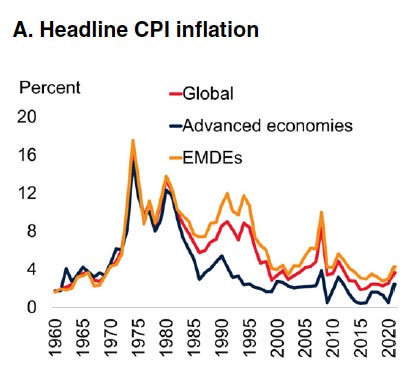



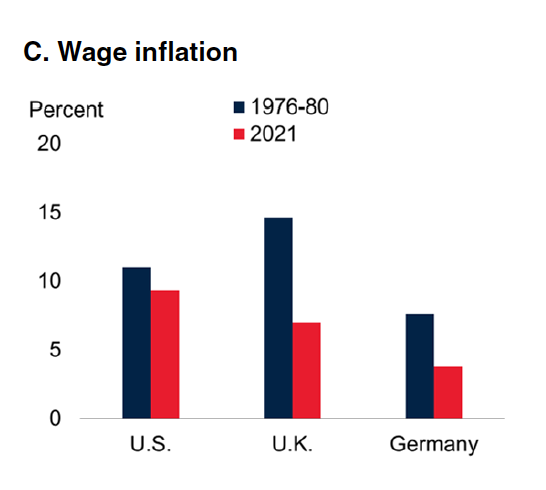
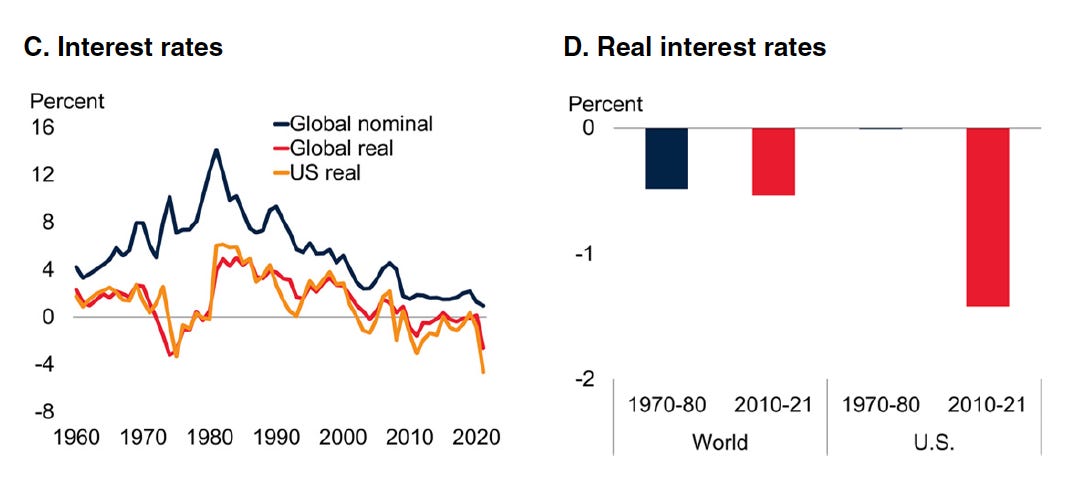

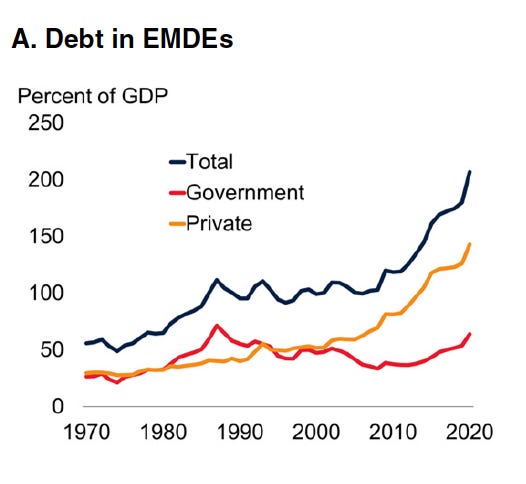
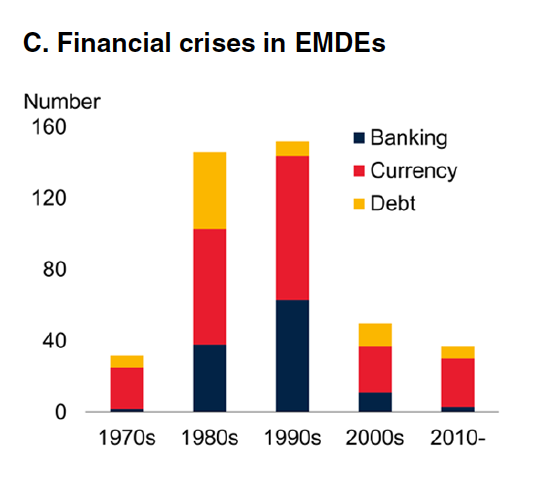

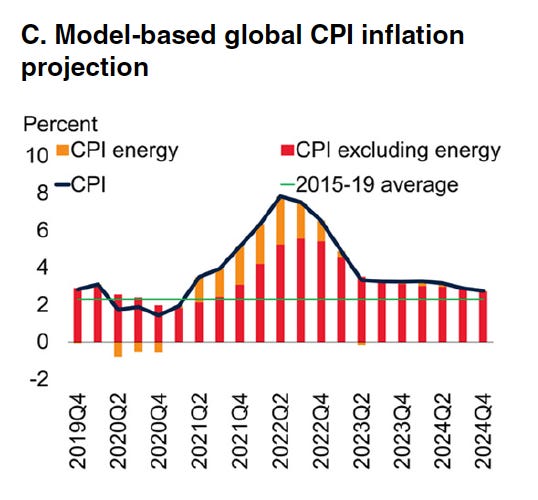


:quality(70)/cloudfront-eu-central-1.images.arcpublishing.com/thenational/L2RUZRIKR3MI5V3JOL77NB747Q.jpg)
:quality(70)/cloudfront-eu-central-1.images.arcpublishing.com/thenational/IM26Y7RZIN3FYMJBPYANDLFHZI.jpg)




